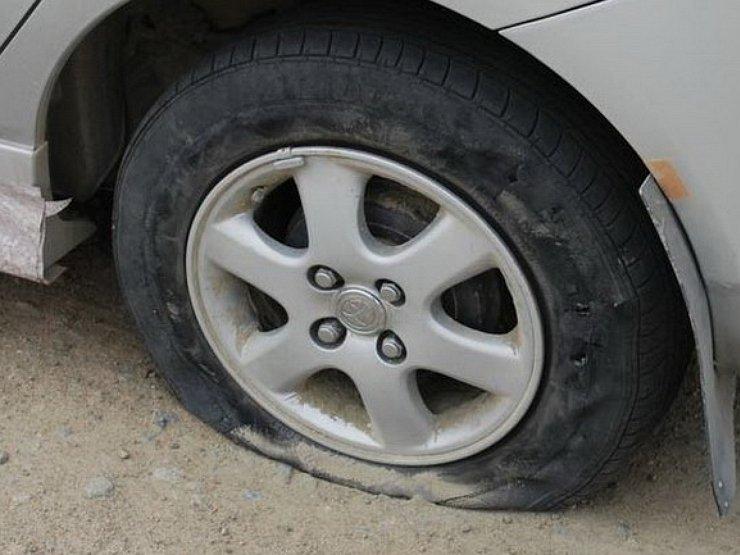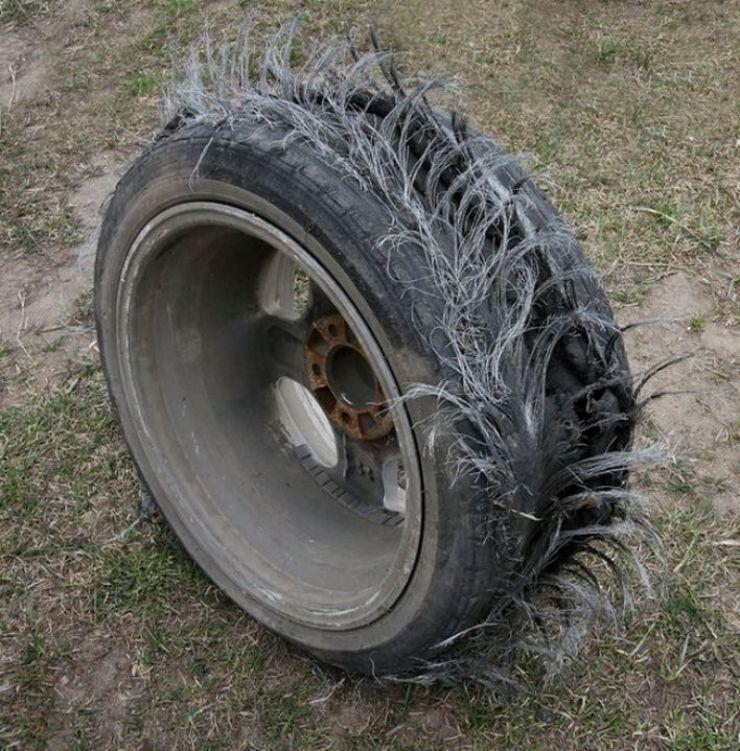
What is more dangerous in winter: under-inflate or over-inflate tires?
At any time of the year, the wheels must be inflated to the optimum pressure. However, not all car owners pay at least some attention to the condition of the tires, if they are not lowered almost “to zero”.
Any car has a factory instruction manual, in which each automaker clearly indicates the optimal tire pressure for their offspring. Deviation of tire pressure from this level can lead to various problems with the entire machine.
Tire pressure can become “wrong” even if you personally checked it; when the tires were changed at the tire shop; when the wheels were changed in the autumn, and the workshop worker pumped 2 atmospheres into each wheel (the room was about 25 ° C). Winter came and the temperature outside the window dropped to, say, -20°C. Air, like all bodies, contracts when cooled. And the air in the tires too.
A temperature difference between 25 degrees Celsius and 20 degrees Celsius will reduce the tire pressure from the original 2 atmospheres to about 1,7. During the ride, the air in the tire, of course, heats up a little and slightly compensates for the pressure drop. But only slightly. On under-inflated wheels, even in summer, any car behaves as if it were driving through a jelly. It obeys the steering wheel much worse, strives to go out of the turn, does not keep the trajectory even on a straight line.
The braking distance of a car with flat tires is increased by several meters. And now let's add to this disgrace such invariably winter attributes as slush on the pavement, freshly fallen snow or ice roll.

Riding on flat tires in such an environment turns into a real roulette (get/not get into an accident) and keeps the driver in constant tension during the trip. About increased tire wear due to low pressure in a situation where, before an accident, it is no longer necessary to mention it.
But the reverse situation is also possible, when the wheels are pumped. This can happen, for example, when a driver walks out to the car on a frosty morning and discovers that all of its wheels have deflated according to the thermal compression scenario described above. What will a caring owner do? That's right - he will take the pump and pump them up to 2-2,2 atmospheres, as indicated in the instruction manual. And in a week, thirty-degree frosts will disappear and another thaw will come - as it often happens recently in the European part of Russia. The air in the wheels, like everything around, at the same time heats up and raises the pressure much higher than required - up to 2,5 atmospheres or more. When the car starts to move, the wheels heat up even more and the pressure in them jumps even higher. The car rides on overinflated wheels - like a goat galloping over stones. The course becomes extremely rigid, the body and suspension are shaken by powerful vibrations even on a seemingly flat road. And getting into a hole, which the driver would not have noticed with normally inflated wheels, can even lead to the destruction of the tire and disc.
In general, driving in this mode for a long time is extremely uncomfortable and the driver willy-nilly is forced to reduce the pressure to normal. Thus, in winter, under-inflated wheels are noticeably more dangerous than over-inflated ones.

